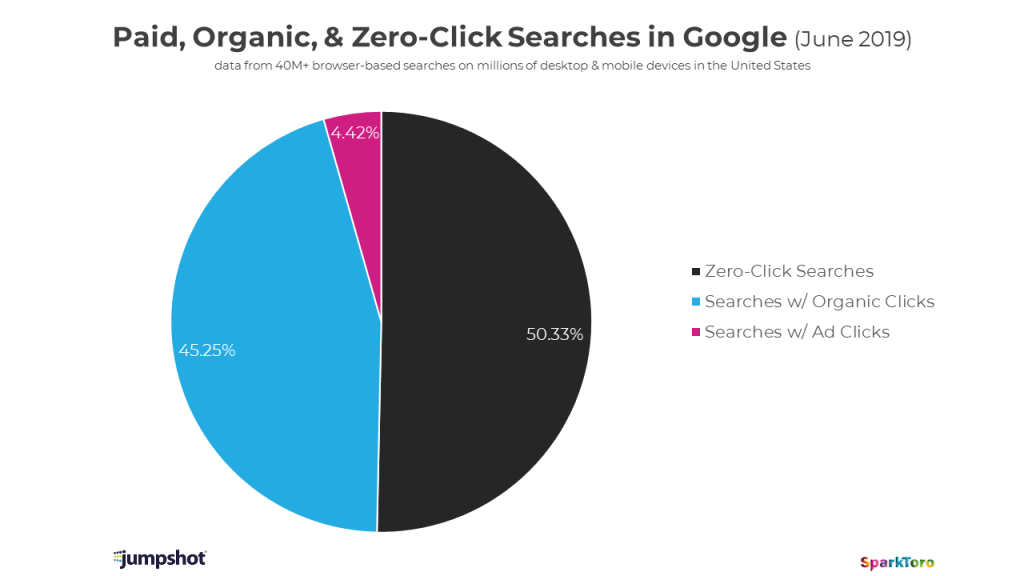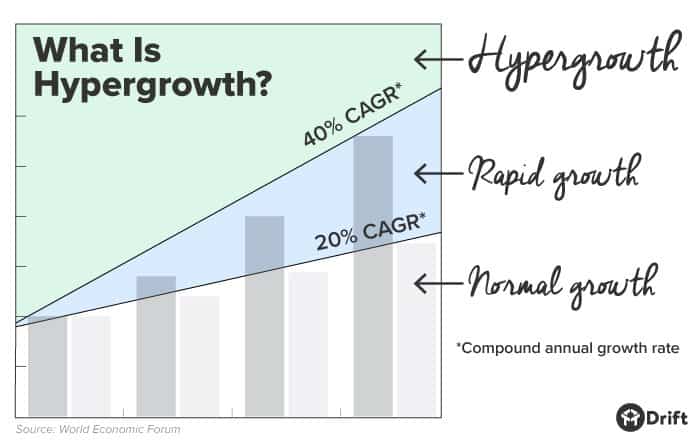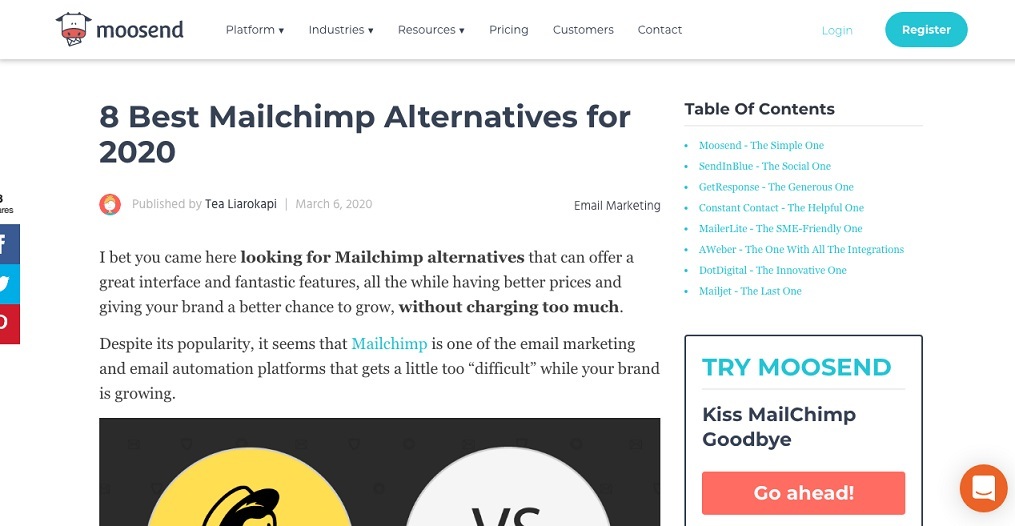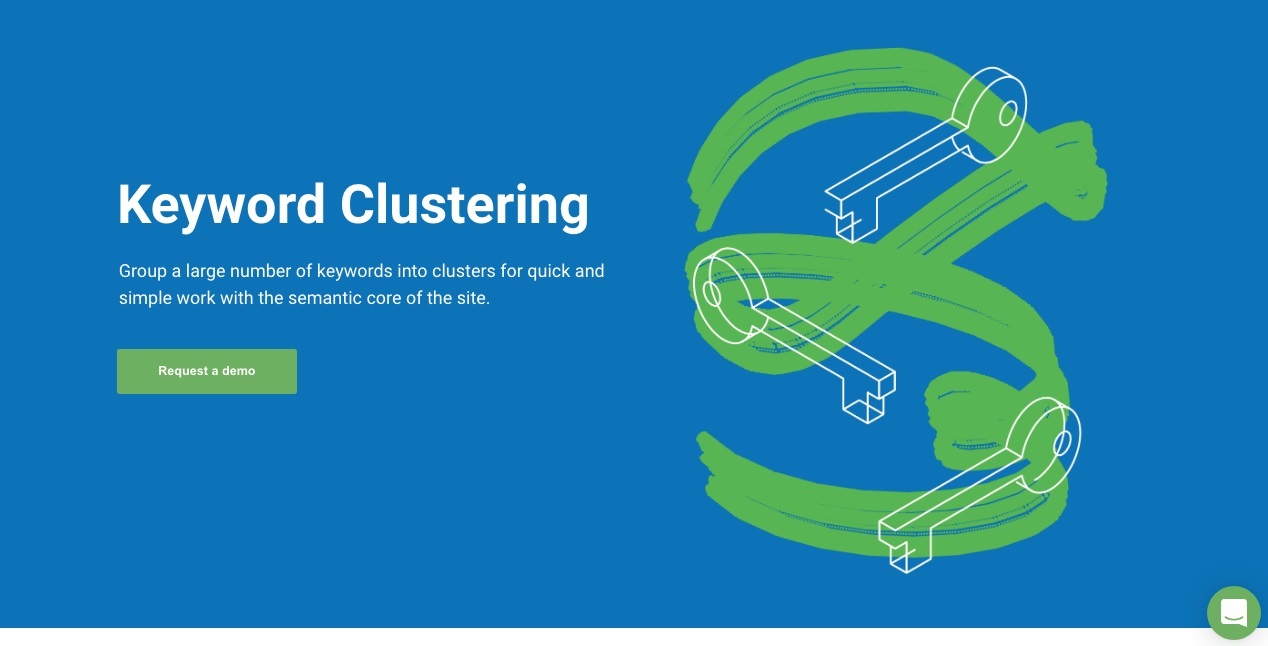Start Exploring Keyword Ideas
Use Serpstat to find the best keywords for your website
SEO For SaaS: The What, Why And How Behind It (2020 Guide)

2. 6 reasons why SaaS SEO is important
2.1 Reason #1: Optimize Experience for Your Website Visitors
2.2 Reason #2: Customer Acquisition Cost (CAC) is usually lower
2.3 Reason #3: Reduce investment on other acquisition channels
2.4 Reason #4: Users coming from organic search usually convert better
2.5 Reason #5: Indirectly helps you improve your paid acquisition performance
2.6 Reason #6: Assist other departments in your company through your content efforts
3. When should SaaS companies invest in SEO (and how)?
3.1 SEO for early-stage SaaS companies
3.2 SEO for SaaS companies that have found a product-market fit (PMF)
3.3 SEO for SaaS companies that want to scale
4. The 6 elements of an SEO Strategy for SaaS companies
4.1 Understand
4.2 Plan
4.3 Optimize
4.4 Create
4.5 Amplify
4.6 Measure
5. Wrapping up
What is Search Engine Optimization (SEO) for SaaS?
With the exception of the past few weeks — where the interest has started to decline due to COVID-19 — it's obvious that SaaS (as a topic) is becoming widely popular.

According to Crunchbase, there are currently 11,622 SaaS companies out there.

As we've just mentioned, SEO is one of the marketing channels to help you achieve that.
Is it easy?
No—far from it, since it requires hard work, consistency, and investing in long-term outcomes.
Is it guaranteed?
Again, far from it, since the amount of search traffic a SaaS website receives may change within a few days due to an algorithm update, for example.
Do results come fast?
No, since search rankings for an SEO campaign usually only improve after a few months.
Note: We usually recommend that our clients expect results in 9-12 months, even though results may often come earlier.
Thus, SEO is a long-term approach to SaaS growth that requires a big investment in both time and money, with results that aren't guaranteed.
The question then is: why should someone invest in it?
Because it works.
According to a 2019 post by SparkToro, almost half of all browser-based searches on Google resulted in a zero-click search.

Thus, we could say that SEO is one of the most significant channels for SaaS companies.
How can this be achieved?
By getting better rankings in the search engine results. SEO for SaaS is like SEO for any other type of business, but with a few major differences.
However, as we mentioned before, SEO is still one of the best options for software companies to grow.
Moreover, SEO is one of the most important channels for SaaS marketing strategies overall.
Why?
Let's look at 6 prominent reasons.
6 reasons why SaaS SEO is important
Well, besides the obvious reasons that apply to most industries and types of businesses out there, there are a few more reasons why SaaS SEO is important.
Below, you'll find the 6 most prominent ones.
Reason #1: Optimize experience for your website visitors
Now, you may be wondering what SEO has to do with user experience.
Even though in the past, Google didn't take into account user experience factors as a way to rank or de-rank a website, this seems to be an increasingly important ranking factor.
For example, let's assume you're searching for the term "lead generation tactics" online.

In this case, the experience that you as a user had on the given page wasn't positive.
And, since that affects (indirectly) the experience that the user has on Google as well, then your web page may as well lose its rankings.
Things that negatively affect the user experience are:
Reason #2: Customer Acquisition Cost (CAC) is usually lower
The difference between the two is that with SEO, you get consistent traffic without having to invest money in advertising.
Of course, you have to invest money to do the research, create the content and regularly update it, but in most cases, this investment is significantly lower.
Here's what the top of the search results looks like for the term "how to create an online course".

Now, imagine if you could get your website on the same page, just below the paid results, but without having to run PPC ads to achieve this.
That would allow you to rank for a keyword with commercial value, but without having to compete in the advertising auction.
Assuming that someone who visits your website has a high chance of taking a desired action (e.g. signing up for a free trial), the CAC from your organic results on the SERPs would be lower.
This is something you can achieve through SEO.
Reason #3: Reduce investment on other acquisition channels

It also means that SaaS companies have to find ways to reduce their investment on acquisition channels that are too expensive.
Investing in SEO is one of the best ways to achieve that. According to Farzad Rashidi, Head of Marketing at Visme:
Now, from the looks of it, it seems that it's much more cost-effective to acquire customers via ads. However, one thing that a lot of people miss out on is ignoring the power of evergreen content. By creating a blog post or landing page, once it gets ranked, it brings in hundreds, if not thousands of visitors to your site every month.
Now, if you convert, on average, one customer every month, you're recouping your investment in 2 months and net positive for the years to come.
So why do we still run ads, you ask? Because it still has a positive ROI on some channels, but our focus is predominantly on content and SEO. If we were to pay Google via Adwords to bring in the 1.5M visitors to our site that we're now getting organically, we would have to spend over $1M EVERY MONTH.
To be clear: I'm not saying that you should stop investing in other channels and focus solely on SEO.
The point I'm trying to make here is that investing in SEO can have long-lasting results that will gradually allow you to reduce investment in other channels.
Reason #4: Users coming from organic search usually convert better
The reason is simple. Because of search intent.
When a user is looking for something like "website chat tools" on Google, they're obviously looking for solutions around website chat and messaging.

Thus, we're confident in saying that if one of the results ranking at the top is able to satisfy the user's intent, there's a high chance that this user will perform a desired action such as sign up for a free trial.
However, there's also another reason why users coming from organic searches usually convert better.
According to Statista, "the average global ad blocking rate in early 2018 was estimated at 27%."
This means that almost one out of three users are actively blocking ads while browsing online.
This ad fatigue leads users to choose the organic results on the SERPs more often—something that was confirmed in the study by SparkToro that we mentioned earlier.
Even though the answers to many user queries are provided on the SERPs (no-click searches), there's still a growing number of people clicking on organic search results and blocking paid results.
Having worked with several SaaS from all over the world, we've learned that users coming from organic usually convert better, as they feel unbiased about their choice.
Reason #5: Indirectly helps you improve your paid acquisition performance
A comparison on the basis of which one of the two channels is better is wrong.
SEO can have an indirect positive impact on the paid acquisition efforts for a SaaS company.
Let's use an example to put that into perspective.
Let's assume you're looking for the term "max length of URL" online. As you can see, the featured snippet (position 0) for this term comes from Serpstat.

Most importantly though, you've seen Serpstat's blog, logo, brand colors and website aesthetics.
In other words, you are now aware that Serpstat exists.
Now, imagine if a few weeks after visiting Serpstat's blog, you search for the term "keyword tool" and one of the ads you see on top of the results comes from Serpstat.
Would you say that you'd be somewhat biased to click that result instead of any of the others?
If you're like most people, the answer is yes.
In general, organic search results can indirectly affect your paid performance.
Of course, the opposite applies as well.
We noticed that when one of our clients almost tripled their PPC budget for some particular search terms, they saw an amazing spike in organic results as well, especially for branded terms.
Thus, SEO and PPC are deeply connected and should be working hand in hand.
In other words, it shouldn't be a one or the other approach, but rather how to get the most out of the two channels combined.

Leave a request, and our experts will advise you on the development of your project, share training materials, and offer test access to Serpstat!
Reason #6: Assist other departments in your company through your content efforts
The way you can achieve this is through your content efforts.
The truth is that as SaaS companies grow, they also have a growing need to support their users in a scalable way.
They can do so by creating content that a) is SEO-friendly and b) educates its users on how to use the product.
Let's use one of Serpstat's blog posts as an example.

The purpose of this content piece is twofold:
- Educate Serpstat users on how to conduct backlink analysis with the API.
- Raise awareness for the API for users looking to conduct backlink analysis.
Let's see what Josh Brown, SEO and content marketing manager at HelpJuice, shared with me on the topic:
This helps our customer success team because it helps ensure that as they work with prospective customers and bring them on board, they can be more efficient with how they help these customers so that they get the most out of our software.
You essentially want to create a feedback loop whereby the content being created combines the knowledge from various team members that's based on their previous interactions with customers.

Now that we've seen why SEO for SaaS is important, let's dive a bit deeper and see when SaaS companies should invest in SEO.
When should SaaS companies invest in SEO (and how)?
The answer—even though not satisfying—is simple:
It depends.
It depends on the lifecycle stage the company is at.
Let's put that into perspective by taking a look at three different company lifecycle stages.
SEO for early-stage SaaS companies
This means that you have to invest time and effort into it and be patient enough to see the outcome of your efforts starting to show up after 9-12 months.
However, the truth is that most early-stage SaaS companies don't have that amount of time.
For an early-stage SaaS, every day is a matter of life and death.
According to a 2019 research study by McKinsey & Company, a SaaS company has a 92% chance of surviving within the next few years if it grows at 20% annually (YoY). Growing at that rate means—according to the World Economic Forum — that the company's growth is between normal and rapid growth.

Can companies in this stage invest in SEO, and if they can, what specific initiatives/tactics should they should invest into?
Let's take a look at some prominent activities.
As you can see from the screenshot below, the interest for guest posting has grown over time.

Of course, there are some misconceptions when it comes to this activity.
Some of the most prominent ones are:
Moreover, in most cases, they can't help you drive traffic back to your website (at least, not the amount of traffic you'd like to receive).
Thus, guest posting is a great way to raise awareness for your product and start building authority for your website, but it definitely can't work as a standalone solution for your SEO efforts.
The reason why you need to do this is because you have to be in the position to "convince" the few users that will visit your site (your potential customers) of your product's value.
A good example of this approach is early-stage PR outreach software Respona.
On its blog, Respona publishes in-depth articles that have search traffic potential, but also highlight the product and its capabilities.
Let's take this article on PR outreach as an example.

Counting the words in this article, we can see that this is indeed an in-depth guide on the topic.


However, the fact that the piece has search potential isn't the only factor that's interesting here.
If you take a look at the piece, you'll notice that it actually does a great job of showing how you can do PR outreach using the tool.

Remember what we said earlier about 11,622 SaaS companies existing out there right now?

Thus, organizing co-marketing activities here makes a lot of sense.
It's not necessary that these activities are based purely on SEO, but you should definitely include actions that also have at least some SEO value for your business.
Let's move on to the next category.
SEO for SaaS companies that have found a product-market fit (PMF)
You no longer strive to acquire new users, as you already have a widespread set of customers.
In most cases, you're also in a better position in terms of SEO.
This stage is usually characterized by company traits such as:
Let's look in more detail at what you can do to make the most out of your SEO efforts.
Two things to keep in mind here are that:
- Those terms are usually harder to rank for.
- At this point, you should have the authority to rank for those terms regardless.
Insert that term into Google search and click enter.



Of course, since LearnWorlds is a company that has already found a product-market fit and has the domain authority to target such a term, it can successfully target and rank for it.
Targeting competitive terms with commercial intent that present your product as the solution to your target market's problems is definitely something you need to do at this point.
I say start investing because link building is an expensive activity, with the cost of this starting at around $200 per link.
According to a 2019 survey on 1,500+ SEO professionals by SparkToro, the quality of linking sites and pages is considered the second-most important ranking factor.

However, since link building is such an expensive activity, we only recommend it to companies that have a PMF as well as the resources to invest in such an activity.
Even though link building has existed for more than a decade as a way to get better rankings, it's easy to see that the interest around this activity continues to grow today.

You need to be consistent with your efforts to start witnessing the impact of link building.
For example, for a software tool like Serpstat, such terms could be...
- Keyword research tool
- Backlink checker
- Rank Tracker

Needless to say, ranking for these terms isn't easy.
However, you need to keep in mind that by this time, you already have the authority to be competitive on the SERPs.
These pages can be used as lead generation landing pages as well as for informing potential users about your features.
By this time, you should also be able to present your product as an alternative to one of the big players in your industry.
An example here is email marketing software Moosend, which has created a great content piece with Mailchimp alternatives on its website.

An early-stage company couldn't rank for this term, but since Moosend is a company that has found a PMF can target and rank for it.
Let's move on to the last category—companies that want to scale.
SEO for SaaS companies that want to scale
This stage is characterized by traits including:
What can companies in that stage do to improve their organic visibility and grow their organic traffic?
Let's look at some of the most prominent activities.
Simply put, you have to dive deeper into the industry you're in by publishing not only relevant content, but also content that will be linked back to and mentioned online by your audience.
A good example here is HubSpot's State of Inbound Annual Report — one of the industry standards when it comes to sales and marketing.

Here, you need to keep in mind that everything you do has to be scalable, and must have the potential to attract links or traffic that will boost your visibility even further.
One of the things you'll notice as you scale is the need to also scale operations like customer support.
You need to constantly educate your users around your product and make sure they get all the answers they need before reaching out to your customer support team.
Now, wouldn't it be great if you could combine that with content that also gets organic traffic?
A good example here is Visme—a presentation software tool that helps you build aesthetically appealing infographics and presentations in minutes.
In their blog on how to create a chart, Visme dives deep into the chart creation process with a step-by-step guide full of ready-to-use templates.

- Educate Visme's current users on how to create charts.
- Attract organic visitors who're searching for something along the lines of "create a chart".
This is a great example of aligning your product marketing and customer support efforts with your content and SEO efforts.
You have something that's obviously valuable to your existing users, but which will also attract new users and potential customers.
This practice will help you scale your customer support efforts, as your customer support team won't have to answer every question there is around that topic.
At the same time, it will help you reach more users who are interested in that particular topic.
Companies that want to scale have to think about scalability in all their operations.
SEO is definitely one of these.
They also have the authority to publish content that will be easily accepted by their audience.
Thus, they can try to scale up their efforts by going after more long-tail keywords and even more less commercial ones.
A good example here is the Conversion Marketing Glossary by Unbounce.

Projects like these can't be easily executed by smaller companies. Moreover, even if they are, results may not be as expected.
However, when you're at this later company lifecycle stage, you can both execute well and expect to see good results from such efforts.
In the next section of this article, we'll present the 6 elements of SEO strategy for SaaS companies.
The 6 elements of an SEO strategy for SaaS companies
Keep in mind that SEO is a very opinion-based field, meaning that each SEO professional does things a little differently.
The following 6 elements are the 6 stages of a framework we've developed organically and that we call the organic growth framework.
So, let's look at these 6 stages in more detail and give a proper explanation of the actions tied to each stage.
Understand
In this first stage, you basically need to make a complete audit of your website from various angles and try to uncover opportunities for growth.
Some of the most prominent activities of this stage are:
To perform most of these actions, you can use a tool like Serpstat.
And, to learn how to perform each action (e.g. how to identify leading speed issues on your website), you can visit Serpstat's page with use cases.

If you can't find an action that you want to include in your audit, make sure to explore the tool further.
Let's move on to the next stage.
Leave a request, and our experts will advise you on the development of your project, share training materials, and offer test access to Serpstat!

Plan
In other words, you need to start prioritizing tasks based on impact and opportunity, and to start building a roadmap that will help you stay on track.
At MINUTTIA, we work with 12-month roadmaps because SEO is a long-term game.
However, you can also go with 6 or 9 months for your roadmap.
Anything below this would be inefficient.
To give you an idea of how prioritization works for us, here's how we prioritize technical optimization for our clients.

In other words, you can prioritize tasks as you see fit.
However, it's essential that you have a plan moving forward.
When you finish with your plan, you can start optimizing.
Author's Note: I recommend that you document your strategy and use a project management software tool to make sure you're executing it correctly. Even though there are many great tools out there for project management, a simple Google Sheet can work just fine.
Optimize
As you can imagine, this is the stage where we start optimizing your existing assets.
We never start by creating new assets, because we first have to improve and optimize what we already have.
This is why the stage of optimization is so important, and why it comes right after the understanding and planning stages.
In this stage, we start optimizing content pieces that seem to have the potential for more organic traffic.
We perform technical optimizations as well as optimize certain on-page elements like title tags and meta descriptions.
Everything you do in this stage should be a part of your strategy—the one you created during the first stage.
Create
After we've optimized what we already have, we're ready to begin creating new content.
Even though different people have different processes when it comes to creation, this is our general framework for creating new content:

You'll continuously create new content and you'll continuously update the content you already have.
Just try to be thoughtful with the content you create and to maintain high standards when it comes to content creation.
According to a study by Backlinko, 94% of content published online gets zero external links.

Amplify
Of course, amplification isn't something we can do for every single page on a website.
This should be done only for our target pages—the pages that can add genuine value to our business.
For example, this page on keyword clustering by Serpstat has more than 270 links from 177 referring domains.

Thus, it's a page that Serpstat needs to amplify.
Even though there are many ways to do that, when we talk about SEO amplification, we usually refer to link building.
Some prominent ways to build links for a particular page on your website are:
However, in our experience, link building gets real results.
Measure
In many cases, SEO teams tend to monitor vanity metrics on Google Analytics or other analytics providers.
However, most of these metrics don't translate into actual impact for businesses.
In other words, they don't really affect the bottom line.
This is why we try to connect the metrics we use to judge our performance to metrics that have an actual meaning for the business.
What exactly these metrics are depends on your business goals, whether or not you offer a freemium or free trial for your product, and your overall objectives as a company.
The fact is that SEO has to be connected with some sort of business metrics.
Otherwise, you'll never get a clear idea of what the impact of your efforts is.
Wrapping up
From technical SEO to link building and keyword research, you now know what SaaS SEO is all about.
I need you to keep in mind that SEO is a dynamic field.
This means that something that worked a while back may not be working anymore.
Even though some ranking factors like the number of backlinks to a particular page became important over time, others such as user experience are becoming more and more significant as time passes.
You also need to be vigilant about your SEO efforts.
To maintain first page rankings, you need to give your best at all times. This means that:
Good luck!
Speed up your search marketing growth with Serpstat!
Keyword and backlink opportunities, competitors' online strategy, daily rankings and SEO-related issues.
A pack of tools for reducing your time on SEO tasks.
Discover More SEO Tools
Backlink Cheсker
Backlinks checking for any site. Increase the power of your backlink profile
API for SEO
Search big data and get results using SEO API
Competitor Website Analytics
Complete analysis of competitors' websites for SEO and PPC
Keyword Rank Checker
Google Keyword Rankings Checker - gain valuable insights into your website's search engine rankings
Recommended posts
Cases, life hacks, researches, and useful articles
Don’t you have time to follow the news? No worries! Our editor will choose articles that will definitely help you with your work. Join our cozy community :)
By clicking the button, you agree to our privacy policy.

